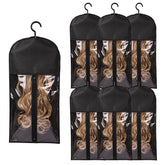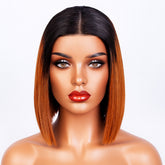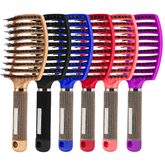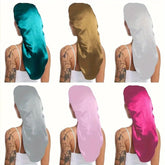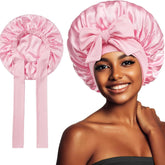Why You Shouldn't Sleep with Wet Hair — Expert Hair & Scalp Advice

It’s a familiar childhood instruction: skip the hairdryer and let your hair air dry. But a recent interview in The Sun with a practising hairdresser has prompted fresh debate about whether sleeping with wet hair is a harmless habit or one that can harm your scalp and strands. Below we set out what experts mean when they warn against going to bed with damp hair, explain the practical risks, and offer safe, evidence‑aligned steps to protect both hair and scalp.
What are the scalp and hair concerns?
Sleeping with wet hair can affect the scalp and hair in a few different ways. Most concerns centre on the combination of moisture, warmth and limited airflow that occurs when wet hair is pressed against a pillow for hours. That environment can:
- Encourage microbial growth: A damp, warm surface can promote proliferation of naturally occurring scalp yeasts such as Malassezia, which are associated with dandruff and inflammatory scalp conditions in susceptible people.
- Increase irritation and flare‑ups: For those with eczema, seborrhoeic dermatitis or sensitive scalps, prolonged dampness may worsen itching and redness.
- Raise the risk of odour or irritation: Trapped moisture can lead to an unpleasant smell or a feeling of stickiness that some people find uncomfortable.
- Make hair more fragile: Wet hair stretches and the cuticle lifts slightly — an important reason why wet hair is more prone to breakage, tangling and friction damage while you toss and turn.
These points explain why stylists and dermatologists often advise drying hair to at least slightly damp before sleep. That said, the level of risk depends on individual scalp health, hair type and how wet the hair is when you turn in for the night.
Practical steps to protect hair and scalp
If you prefer to avoid heat damage from daily blow‑drying yet don’t want to sleep with completely wet hair, try these simple, low‑risk options. They balance scalp hygiene and hair health while keeping styling damage to a minimum.
- Blot, don’t rub: Gently squeeze excess water from strands with a soft towel or a microfibre wrap. Rubbing roughens the cuticle and increases breakage.
- Air‑dry until damp: Allow hair to air dry until it’s only slightly damp before bedtime. This reduces the prolonged moisture against your scalp without subjecting hair to constant heat.
- Use a low‑heat setting if you blow‑dry: When you do use a hairdryer, choose a low to medium heat and a nozzle to concentrate airflow; keep the dryer moving rather than holding it in one spot.
- Protect with a loose style: Tie hair in a loose, high bun or braid to cut down on friction against the pillow. Avoid tight bands that create tension at the roots.
- Swap to silk or satin bedding: Silk or satin pillowcases reduce friction and help prevent breakage and frizz compared with cotton alternatives.
- Mind the scalp: If your scalp tends to be oily or prone to dandruff, make sure it’s dry enough that natural oils aren’t trapped against the skin for hours.
- Address persistent symptoms: If you notice ongoing itching, soreness, persistent flakes or unpleasant odour, consult a GP or dermatologist for a tailored diagnosis and treatment plan.
Signs to watch for — when to see a clinician
Occasional damp nights aren’t typically cause for alarm, but seek professional advice if you experience any of the following:
- Persistent or worsening itching and redness on the scalp.
- Heavy, oily‑looking flakes that don’t respond to over‑the‑counter shampoos.
- Blistering, painful patches, or open skin that suggests secondary infection.
- Sudden or noticeable hair shedding beyond normal seasonal change.
A clinician can distinguish between common dandruff, seborrhoeic dermatitis, fungal infections or other causes and recommend medicated shampoos, topical treatments or lifestyle adjustments where required.
Takeaway
Going to bed with soaking wet hair is worth reconsidering. While a single night with damp hair is unlikely to cause lasting damage for most people, regular prolonged moisture against the scalp can increase irritation, contribute to microbial overgrowth in susceptible individuals and make wet strands more liable to breakage. Simple habits — blotting hair dry, letting it reach a damp state before sleep, using gentle ties and a silk pillowcase — reduce risks without forcing daily heat styling. If you have persistent scalp symptoms, get a professional assessment rather than trying repeated home fixes.
Explore More: Discover related reads from Hairporium — News • Guides • DIYs • Expert Articles.
More From the Experts: Read interviews and insights from stylists and professionals on Hairporium Expert Articles.

